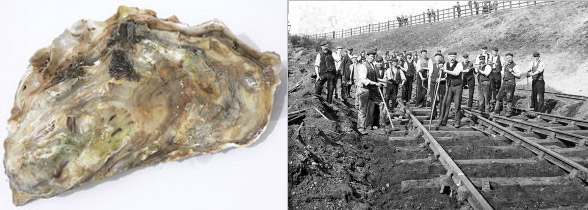Let Geoinvestigate quote for your next desk study or borehole site investigation in Sheffield, Rotherham, Chesterfield and Barnsley. From Geoinvestigate’s Northern office our team of dedicated geoscientists provide expertise in the Geo-environmental, Geotechnical and Contaminated Land sectors helping architects, builders, land surveyors, structural engineers, insurers, project managers and private home owners to get the right solution no matter the size of their development or how complex the problems with the ground may be.
From our Head Office in the North, Geoinvestigate is looking to expand its contaminated land consultancy and site investigation services in the Sheffield, Rotherham, Chesterfield and Barnsley areas. From 3 UK bases Geoinvestigate provides, phase 1 desk studies, phase 2 borehole site investigations, contaminated land risk assessments and drilling investigations across the country from Edinburgh to London and further.
Owing to a rapidly increasing workload, the arrival of another new drill rig and a recently opened site investigation office in Reading, Geoinvestigate is also aiming to strengthen, expand and spread its activities even further across the UK.
Stuart Howe manager of Geoinvestigates Northern borehole site investigation office said we are particularly interested in in expanding our Northern operations into Sheffield, Rotherham, Chesterfield and Barnsley as local work very important to us.
Stuart said though we are active in Sheffield, Rotherham, Chesterfield and Barnsley we could do with increasing our work load in these areas which are fairly close to home for us.
Over the years the company has developed a very good knowledge of the geo-environmental, engineering geology and geotechnical problems existing in these areas the most notable of course being abandoned mine workings and ground contamination associated with the regions industrial past.
Stuart remembers one particularly memorable site investigation the company carried out in Sheffield involving a former Victorian railway viaduct. Geoinvestigate were asked to drill down through the bridge deck to the to pof the piers behind the spandrels to establish the depth and nature of the overlying fill.

Briefly Geoinvestigate’s boreholes encountered hard standing then railway ballast from to 0.75m underlain by firm cohesive cobbly and bouldery fill 0.75m – 1.50m in turn underlain by oyster shells 1.50m – 3.00m. The shell horizon was followed by firm finer puddled clay fill 3.00m – 3.40m then 10cms of asphalt/tar followed by brickwork.

The oyster shell horizon was fascinating as a subsequent trial pit at his location showed it was a very extensive deposit and was stratified appearing to have been end tipped forming a fan shaped lobe.

As Dickens’ Sam Weller remarks in the Pickwick papers: ‘Poverty and oysters always seem to go together’.
Oysters have been highly sought after fare in Britain since Roman times. In the Middle Ages oyster fell out of favour for a while. But by the end of the 18th century the industry had become highly regulated and although oysters had been the delight of the rich for a very long time, industrialisation cheapened them, making oysters one of the staples of the diet of the poor and the working man.
Oyster are most nutritious when eaten raw. Jonathan Swift is quoted as having said, “He was a bold man that first ate an oyster”
Beef and oyster pie is a classic Victorian dish; it was the food of the poor, and perhaps surprisingly to us today, the poorer you were the more oysters you would put in your pie. Oysters were plenty, the smaller ones sold as fast food on the streets of London and other major industrialising towns and cities such as Sheffield and Manchester or pickled to keep, while the bigger ones were put in stews and pies to make up for the deficiency of meat in Victorian England.
Oysters were a cheap source of protein and it is perhaps this that made them a staple of the railway labourers and navvies.
Oysters were also a typical food to be found in public houses, where they were most commonly served with a pint of stout. Stout beers were popular because of their strong flavour, higher alcohol content, longer shelf life and because they were cheaper than other beers. The claims of Stout being a nutritious drink made the pairing with oysters the perfect cheap meal for the working class including railway workers on their way home with their wages.
Demand for oysters was high, with as many as 80 million oysters a year being transported from Whitstable’s nutrient-rich waters to London’s Billingsgate Market alone. In the late 19th century the natural oyster beds became exhausted in England. As the oyster beds further declined, what had previously been the food of the poor became a delicacy for the upper classes once again.
So it would appear that Geoinvestigate’s boreholes had located an old oyster midden dating from the mid 1800s when the railway bridge had been constructed at Sheffield. One can imagine the workers at lunch time sitting on the skeletal brick arch work of the bridge scooping or sucking out the contents washed down by a couple of bottles of stout ale – afterwards tossing the shells into the V shaped void behind the spandrel wall above the bridge pier. We estimated that there must have been 1000s of oyster shells in the midden behind the spandrels. It is surprising that the shell infill was allowed to remain when one considers that subsequently when complete the bridge would support heavy locomotives and goods wagons.
For more information on the borehole site investigation services Geoinvestigate can provide in Sheffield, Barnsley. Rotherham or Chesterfield talk to Stuart or Jack at our Northern site investigation office or send us an email.

